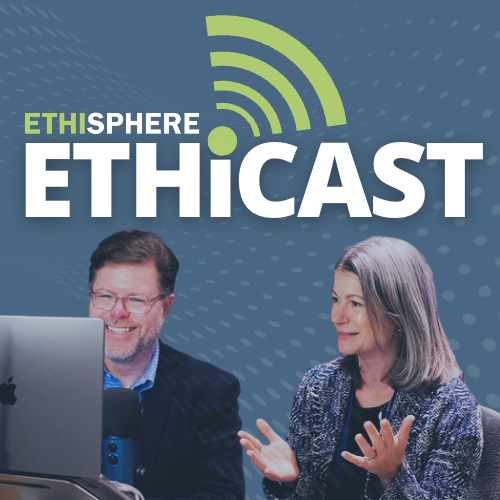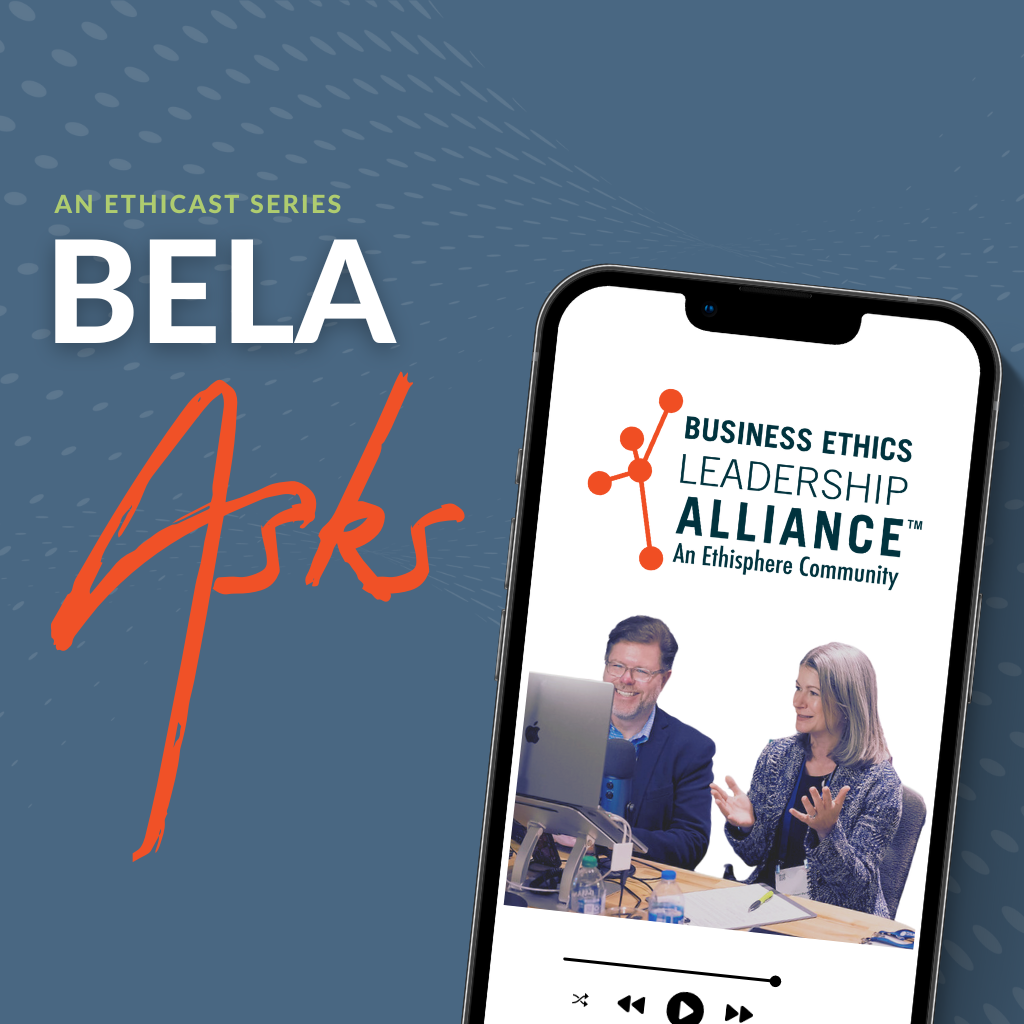[00:00:00] Speaker A: Hi, everyone. You've got questions and we've got answers. Welcome to another Bella Asks episode of the Ethicast.
The Business Ethics Leadership alliance, or bella, is a global ethics and compliance community that provides exclusive access to helpful data, benchmarking events and other resources to advance your ethics and compliance program. And with bella's concierge service, members can submit any question regarding ethics and compliance and our internal experts will provide an answer, plus helpful resources with more information.
And while we invite everyone watching and listening to join Bela, we also know that there's no competition in compliance, which is why we're using this program to thematically respond to high level questions from the Bella community for the benefit of ENC teams everywhere.
And joining us once again to answer those questions is Bella chair Erica Salmon Byrne. Erica, it's good to see you again.
[00:01:00] Speaker B: Bill, it is great to see you again.
And I'm really excited to answer this week's question.
[00:01:07] Speaker A: Well, this question is an engagement question and it reads, what employee listening strategies really make a difference?
[00:01:13] Speaker B: Yeah, I love this question, Bill.
So, couple of thoughts. First off, who's doing the listening?
Which is going to be an important piece of the answer because the strategies that are going to make a difference are going to depend a little bit on the circumstances in which the listening is happening. So let's say that this question is really aiming at what employee listening techniques really make a difference for a manager.
There. I'm going to lean into active listening. I'm going to lean into asking managers to put their phones down or close their email or close their teams or whatever it is that might be distracting them and fully pay attention to what their particular employee is trying to share with them. And one of the fun ways you can practice this is an improv technique called Last Word. So the idea behind Last Word is that you are. I am going to start my next sentence with the last word that you used.
And the, the thing that makes this particular technique so great for active listening now it gets really absurd really quickly. Like if you actually play Last Word, I encourage you to try it. It's really fun, you know, at dinner tonight or, you know, the next time you're in the car with a friend, try to play Last Word for a couple of minutes. You are going to get really silly really fast, without question.
But the reason it's important and the thing that's fun about it is it forces you to listen to the last word of the person with whom you are conversing. And it breaks the habit that too many of us have to Simply just think about what we're going to say next instead of actually listening to the person that we're talking to. And that is something that I, as your conversational partner, am going to realize, right? I'm going to notice.
And depending upon the employee, I'm probably going to internalize.
So, Bill, if you come to me on Tuesday and you're like, hey, Erica, do you have a second? And I say, yeah, sure, Bill, what's up?
But as you start talking to me, my eyes are off on the side, and I'm obviously looking at my other screen, and you can kind of tell that my. My fingers are moving because I'm typing to someone, you're going to have a very different response to that interaction with me, as opposed to if you come to me on Tuesday and you're like, hey, Erica, do you have a second? And I say, you know what, Bill, I just have to finish this email because if I don't finish this thought, it's going to. It's going to leave my brain. So give me 30 seconds, and then you can have my full attention. And you just do something else for 30 seconds. And I finish that, and then I turn to my camera and I say, okay, Bill, I'm all yours.
Very different, right? That's a very different exercise. But so often we think that either the person we're talking to doesn't notice how distracted we are, or we think that whatever we're doing that's distracting us is definitely more important than whatever it is that you could be bringing to me. So active listening, right? Give the person the gift of your attention.
Try to listen to what they're saying instead of preparing your next remark or, like, witty banter that you're coming back with and understanding that there's really nothing else going on as a people leader in particular, that could possibly be more important than the conversation you're about to have with your employees. So. So those are a couple things for the manager.
If this particular Bella member is writing in to say what employee listening techniques really work for, like, broad employee feedback, that's a different question. I'm going to answer that one, too. This is a twofer. It's two for Friday.
So if it's. If it's that kind of thing, like what.
What kind of vibe checks can I, you know, can I have for. For my employee base?
That is where you're going to want to have a layered approach. So are there things that you can be doing where you're putting information out into your ecosystem and you're asking employees to react to it. Maybe it's polling, right? Maybe it's likes and shares on your internal intranet. Maybe it's clicks on documentation that you put out there. Maybe it's asking for submissions for things like what questions do you have for, you know, this particular leader that I'm about to have a conversation with. Maybe you're soliciting feedback from your ambassadors and your, and your liaisons. Maybe you launch a Dear Ethics compliance column and ask employees to send you questions. Right? There's lots of different ways that you can try to get a pulse on what's happening with your employee base using some of your existing channels. But really think about how you're going to layer those pieces and don't over index on any one particular channel. The place that I see so often compliance teams getting a little bit off the path is, you know, situations where they are over indexing on just one signal, right. So whether that is policy clicks, right? Policy clicks are the be all and end all of everything that we could possibly need. Or it calls to the hotline. It's so tempting to say, well, nothing's coming up on the hotline about that, so everything must be fine, right?
It's, it's very human, it's very natural. But when you do that kind of thing, you pretty quickly find yourself, you know, losing your North Star and which is what are my, what do my employees need? Right. At the end of the day, the, the reason you want to do the vibe check and figure out what your employees are engaging with is because you're trying to anticipate what they're going to need.
And if you over index on one piece of information, then you're going to find yourself lost in the woods.
[00:06:42] Speaker A: Well, Erica, thank you so much for offering your insights on this question today. We really appreciate it and this is a great question. So thank you so much for your insights.
[00:06:48] Speaker B: Oh, yeah, no, absolutely, Bill, my pleasure. And to all those Bell members out there, keep the questions coming and you never know, I might turn them into two questions when Bill actually delivers them to me on Bella Asks.
[00:06:59] Speaker A: To learn more about Bella, visit ethisphere.com bella to request guest access to the member resource hub and and to speak with the Bella engagement director. If you have a question that you would like answered on this program, contact the Bella Concierge service and we'll get to work on it for you. I'm Bill Coffin and this has been another Bella Asks episode of the Ethicast. If this is your first time listening, we hope you've enjoyed the show. For more content like this every week, please subscribe to this program on YouTube, Apple Podcasts or Spotify. You can also check out full episodes of this show as well as many other free resources and the Ethisphere resource
[email protected] resources. Thanks for joining us, and until next time, remember, strong ethics is good business.


